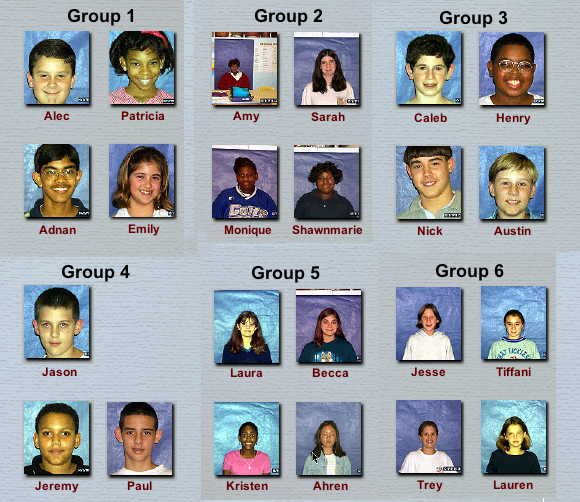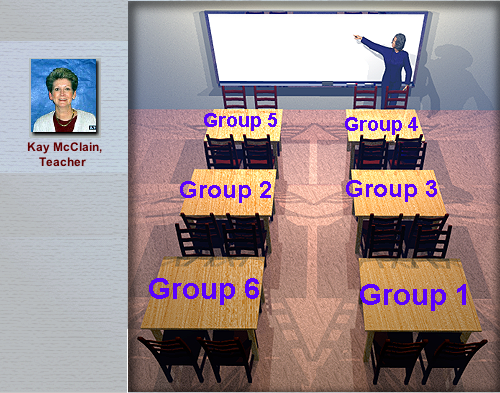Ranking Data to Make Decisions: The Case of the Sneakers Purchase
Background | Lesson Plan | Videos | Issues Matrix
This is a multimedia case study of a one-day lesson in a seventh-grade mathematics classroom in a large urban school district.
Background Information
About the Teacher
The teacher in this case study, Kay McClain, is an experienced teacher; she has taught mathematics for 17 years at the 7th through 9th grade level. At the time of the filming of this lesson, she was a professor of mathematics education at Vanderbilt University where she worked with preservice teachers. Dr. McClain worked with the students in this case study for two weeks prior to the filming.
About the School
This case study involves a one-day lesson in a seventh grade classroom at a public school, Meigs Magnet School, in Nashville, Tennessee. Meigs enrolls students in grades 5 through 8 and is one of 32 middle schools in the Metropolitan Nashville-Davidson County School District. The school district is the 46th largest urban school district in the United States, and has about 72,000 students, of which 50% are Caucasian and 44% are African American. Approximately 45% of the students qualify for free or reduced lunches, and almost 80% of students graduating from a district high school pursue post-secondary education.
Meigs Magnet School has approximately 580 students, including 130 seventh graders, and has an average daily attendance of 95%. Students from the school district are eligible to apply to be admitted to a magnet school, like Meigs, if they are in the top 50% academically of their grade district wide. The school has a student-to-teacher ratio of 24.6 to 1. Almost 70% of the teachers at Meigs have at least 10 years of teaching experience, and more than 60% of the teaching staff have earned masters degrees. The school day at Meigs is divided into seven class periods of 45 minutes each. However, Tuesday and Wednesday are “double days”; on Tuesday each of the even-numbered periods meets for a double period and on Wednesday the same occurs for the odd-numbered periods.
About the Students
The seventh grade students in this case study are in a pre-algebra class, which follows a state-mandated curriculum that is designed to prepare them to take algebra the following year. The class is comprised of 11 girls and 10 boys. The filming for the case study took place in the second month of the school year.
About the Lessons
This lesson is the first in a sequence of lessons in a unit on data analysis. Within this particular lesson sequence, the primary focus is on ranking data and aggregating ranked data with attention being given to weighted ranks. This lesson is designed to highlight the mathematical issues involved in comparing ranked lists which have been created from summing ranks across lists and from averaging ranks across lists. Students’ understandings of average are typically grounded in an algorithmic approach which hides the importance of average in terms of what it tells you about a data set. The relationship between the sum and the average is not well understood by students. Many students think that the sum is a more accurate measure of the data set and that an average is only an approximation. These mathematical issues can be teased out by having students compare the results of aggregating ranked lists by both summing and averaging. It is expected that this comparison will help build students’ understandings of both rank and average. These mathematical issues can be revisited and built upon in the subsequent problems in this lesson sequence and later in this unit.
This Classroom


Resources
Lesson Plan
Student Math Activity
Student Work for Sneaker Problem
Student Homework Journal
Credits
This online multimedia case study was created under NSF Grant #REPP-9725512.
Principal Investigators: Janet Bowers, San Diego State University; Helen Doerr, Syracuse University; Joanna Masingila, Syracuse University; Kay McClain, Vanderbilt University
Video Producer: Eddie Baker
Programmer: Yan Huang
This online multimedia case study is based on a CD version.
CD Version Programmer: Jeff Sale
Graduate Assistants: Valerie Teich, Syracuse University; Susan Bright-Moore, Vanderbilt University; Garrett Kenehan, San Diego State University
Information and comments, please contact Janet Bowers.
